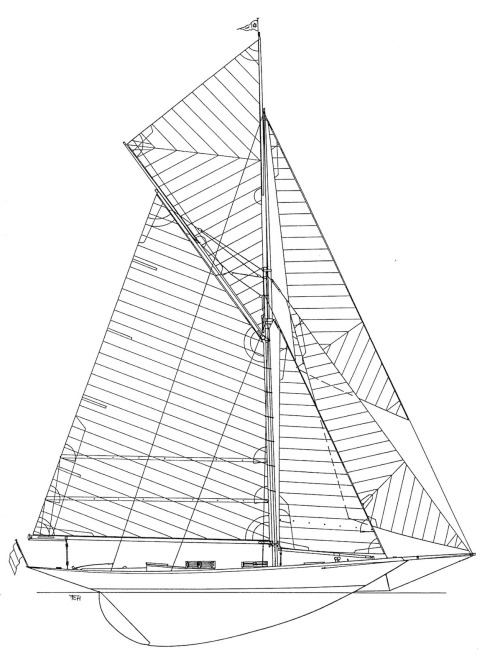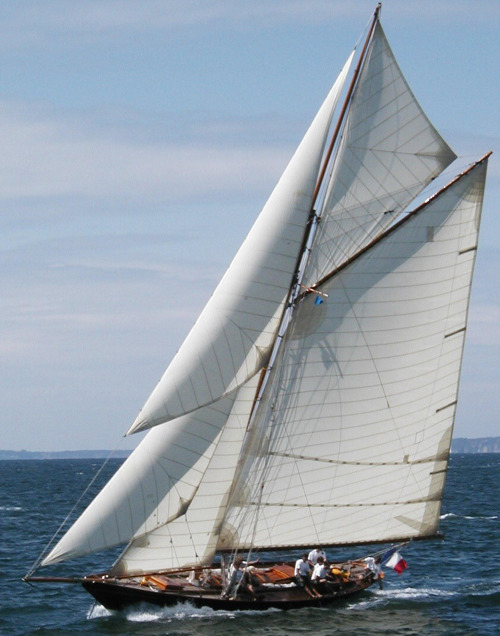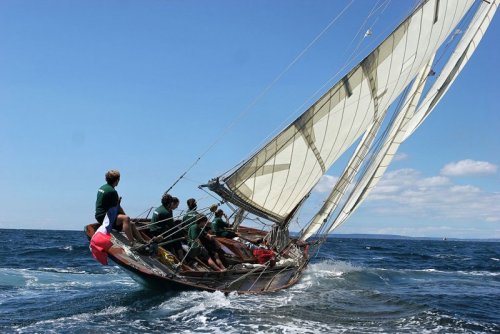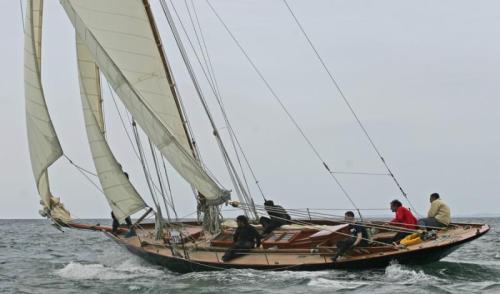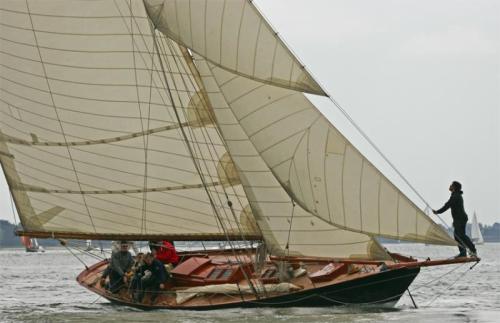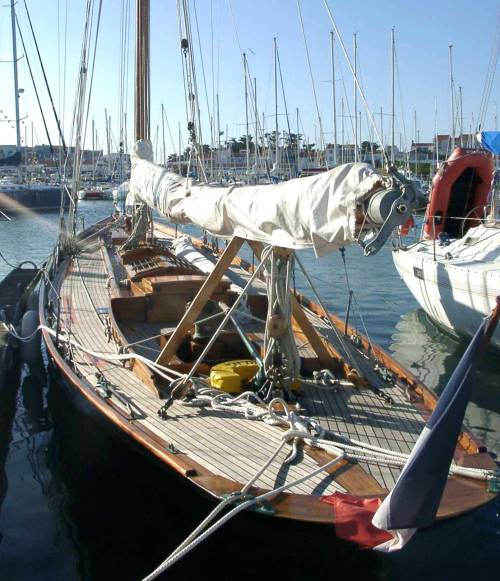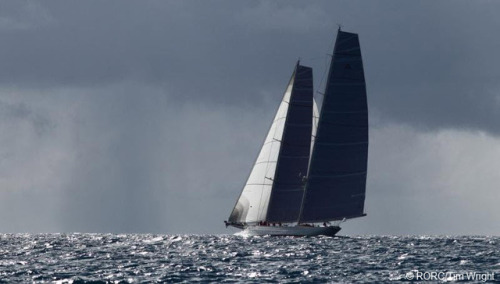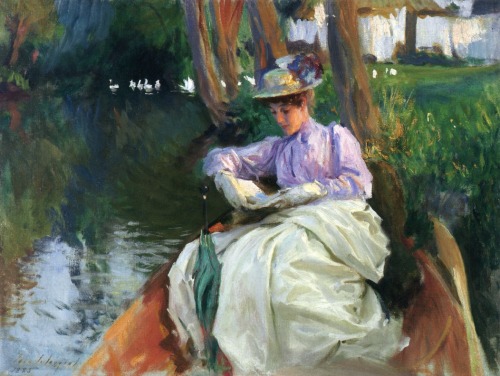
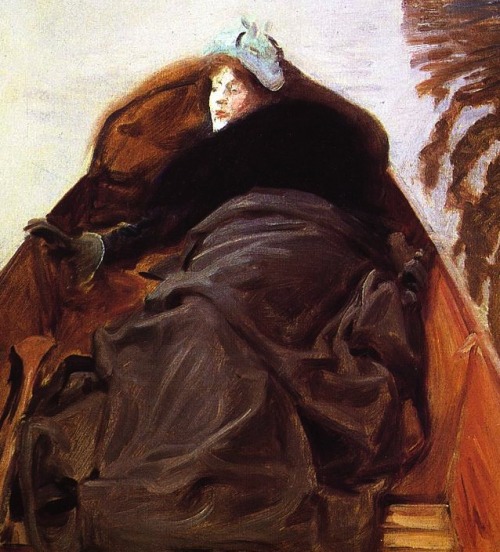
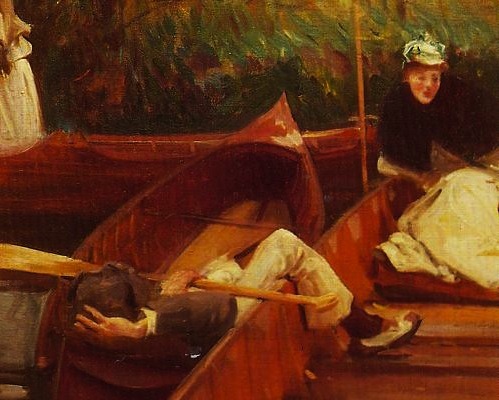

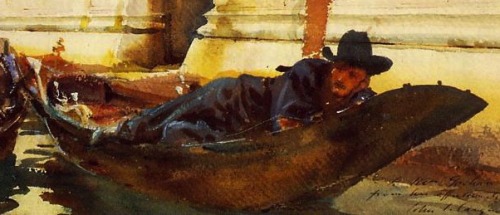
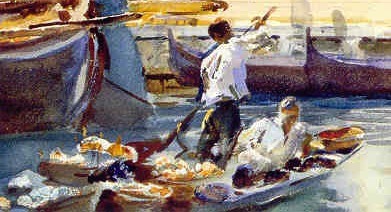
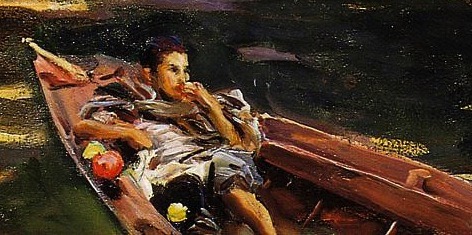
Lounging in Boats – John Singer Sargent
By the River – 1885, oil on canvas
Autumn on the River (detail) – 1889, oil on canvas
A Boating Party (detail) – ca. 1889, oil on canvas
Paul Helleu Sketching His Wife – 1889, oil on canvas
Gondoliers’ Siesta (detail) – 1905, watercolor
On the Steps of the Salute (detail) – ca. 1906, watercolor
The Rialto, Venice (detail) – 1909, oil on canvas
Sargent loved to paint his subjects lying in (or occasionally next to) small boats. These are some of my favorites.
Sargent painted By the River when he was 29. He’d achieved early fame as a portraitist a few years before, but since the outcry surrounding Portrait of Madame X in 1884 the commissions had dried up. So he left Paris and spent several years traveling, visiting friends like Henry James in London and Claude Monet in Giverny. Perhaps due in part to the influence of Monet, many of Sargent’s works during this period, including this one, are fairly Impressionist.
I’ve been unable to learn where By the River is set or who the model is, though it certainly looks like Giverny. I love the lavender color, and the birds in the background (which I must reflexively identify as mute swans, Cygnus olor). I also like the detail of the curved oar blade, making it clear what kind of boat this is. Mostly, though, I love the way Sargent conveys mood via details of his subject’s expression and body language.
In Autumn on the RiverSargent painted one of his favorite subjects: his baby sister Violet. Born in 1870, she was 14 years younger than he was, which would have made her about 19 in 1889, when Autumn on the River was painted. Their father, Dr. FitzWilliam Sargent, had died in April of that year, and John had canceled a planned visit to Monet at Giverny to spend time in England with his mother and his two sisters. By now his career as a portraitist had taken off again, with as many commissions as he could handle from wealthy patrons in New York, Boston, and London.
Violet lies back in the boat, wrapped in a dark fur stole and blanket, a gloved hand on the gunwale as she looks out on what I’m guessing is the river Avon (his mother and sisters lived at Fladbury Rectory, Pershore). The cold and the autumn colors make it a somber scene.
A Boating Partyis merrier. Also painted in 1889, it features a woman sitting on a dock (or on a larger boat?), while a young man reclines in a canoe, his leg draped over the gunwale to hold his craft alongside, a paddle in one hand and his other hand behind his head. The woman wears the same hat and stole as Violet does in Autumn on the River, and the sources I’ve read favor the idea that she is, in fact, Violet, which would make it possible that the young man is Francis Ormond, with whom Violet was in a relationship at the time. Their mother did not approve of the match, and had John take Violet with him in December when he traveled to New York, intending for her to be introduced to eligible Americans. The tactic failed, however, and Violet married Ormond two years later.
Paul Helleu Sketching His Wife was also painted in 1889. Helleu was French, but as one of Sargent’s closest friends, I wonder if he and his wife Alice visited Sargent at this time, such that the painting actually depicts the same canoe as the one visible in A Boating Party. It looks similar, at least, and it’s such a lovely view of it, including the reflection in the varnish on the bow, that I had to include this painting in the set, even though Alice is technically not lounging in the canoe, but only alongside it.
Sargent traveled regularly, including visits to Venice in his late 40s/early 50s that inspired him to paint many people lounging in boats, including in Gondoliers’ Siesta, On the Steps of the Salute, and The Rialto, Venice. Carter Ratcliff has written:
Though the Sargent family was not rich by the standards of the Victorian plutocracy, his mother and father had enough money between them to maintain a respectable front in their travels through Italy, Switzerland, and France. Raised amid servants, Sargent took no notice of the poor who so disturbed a democrat and idealist like Burne-Jones. When peasants and workers appear in Sargent’s art, they belong to the scenery.
I’ve cropped in tight on details in these three paintings to highlight those aspects of the scenery.
Reposted from http://lies.tumblr.com/post/71450222305.

